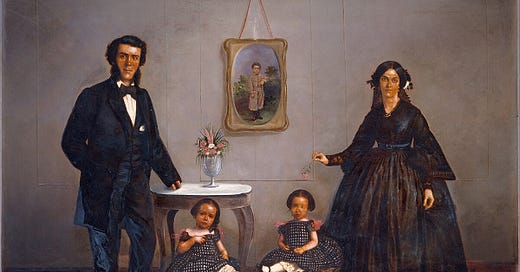This post is split into parts, so as not to be too long for email. R code is available here.
West… wood!
Stepping off the plane in 2007 and touching English soil after a year in the US, I spontaneously murmured “Westwood! Yeah yeah yeah yeah yeah.” It felt like the cry of my people.
Tim Westwood was a DJ on BBC Radio 1. He played hip-hop and was quite important in bringing hip-hop to the UK scene. “West… wood! Yeah yeah yeah yeah yeah” was his signature call, pronounced in a mid-Atlantic drawl. Perhaps this puts a picture in your mind. But although some Westwood details fit that stereotype — a gun incident and recent allegations of sexual harassment — Tim Westwood is the white, UK-born son of a local bishop.
There’s a graffiti artist in my town called Knapple. Her signature is a stylized pineapple. She sprays her artworks on the underpass, on the walls of hip establishments and smart housing developments, and sometimes on the local bins. She is not exactly underground: she has an Instagram feed1 and has featured in the national news.
Graffiti has some interesting dynamics. The first is the Council’s Dilemma. Rank the following outcomes in order of preference:
An empty underpass wall with no graffiti upon it.
The same wall covered in hurried scrawl.
The same wall covered in carefully-created street art.
Most people probably prefer outcome 1 to outcome 2. People may reasonably disagree over how to rank 1 and 3. But in many cases, 1 is not a realistic option. The choice is between options 2 and 3. Either you ban graffiti, in which case the vandals scrawl their tags and run, or you allow it, giving them the chance to produce something more considered.
The next dynamic is the Vandal’s Puzzle. Suppose you want respect in the street art community. But you are not very good at drawing. Should you:
Scribble your tag on the underpass, where it will go unnoticed and overdrawn, and you’ll offend the people whose street art you’ve vandalised?
Tag an owner-occupied house, where the owner will probably paint it over and will definitely want you arrested?
Tag a wall on a council estate, where the inhabitants will hate it just as much but have less time and ability to complain, and bigger problems on their hands?
So the graffiti spreads from the underpass to the council estate, making it feel a little more depressing and its inhabitants a little more powerless. But it’s helpful for house buyers! They know which areas to avoid.
The final dynamic is the Knapple Konundrum. You are a street artist with an Instagram feed and an income stream from savvy housing developers. But isn’t that a bit… bourgeois? How can you recharge your underground credibility? Maybe by decorating the occasional bin. And so we end up with the local council and developers paying respect and money to the people who graffiti their housing estates.
I sometimes like to think that Knapple is a bishop’s daughter.
Coming apart or sinking together?
Charles Murray wrote in Coming Apart that the rich in the US had failed to “preach what they practised”. They had continued to get married and work hard at steady jobs, but they hadn’t publicly endorsed those values. Meanwhile, in poor communities work, religion and marriage had weakened.
The situation is Europe is worse. Here, the middle and upper classes have followed the same path as the poor.
Later on, I’ll talk about why and how this happened, but first let’s look at some hard data. I’ll mostly follow Murray’s categories, and use round 9 of the European Social Survey, from 2018. This includes the United Kingdom. I’ll define rich and poor by education — did someone go to university? — and by the household’s income decile within the respondent’s country.
Marriage
Europeans who went to university are no more likely to have been married by their 40s than those who didn’t.
Rich households are more likely to be married, but some of this must be because married households can have two earners, so it is not a useful statistic, and I haven’t found a good alternative.
If we look at whether people are currently living with a spouse, an unmarried partner, or alone, we see the same pattern: no differences by education.
Extramarital births
In the US, the poor are more likely to have out-of-wedlock births. The differences are stark: by 2008, 60% of births in the lowest education category, but less than 10% in the highest category, were outside of marriage. The changes from 1960, when less than 5% of all births were nonmarital, are equally stark.
Europe is different. The charts below show the proportion of ESS respondents with children whose first child was born before they were married. Rich and educated respondents were, if anything, more likely to have had an extramarital first child.




